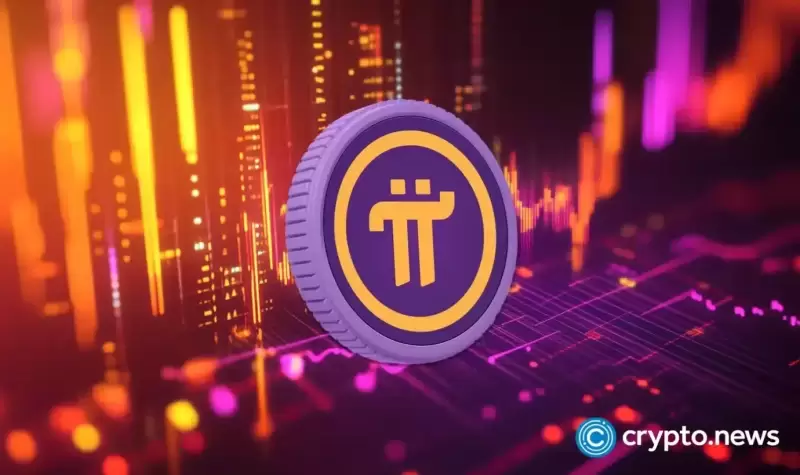 |
|
 |
|
 |
|
 |
|
 |
|
 |
|
 |
|
 |
|
 |
|
 |
|
 |
|
 |
|
 |
|
 |
|
 |
|
Cryptocurrency News Articles
India Emerges as a Key Player in the Global AI Race with Neuromorphic Computing Breakthrough
Sep 17, 2024 at 04:02 am
India's rapidly growing AI industry has also received considerable support from its government, which has introduced several strategic policies

Artificial Intelligence (AI) is rapidly changing the world, becoming an integral part of businesses across various sectors. From healthcare, retail, finance, manufacturing, and supply chain to education, energy, and entertainment industries, there has been a growing demand for AI-powered tools.
According to PWC, AI can transform the productivity and GDP potential of the global economy with the greatest gains to be seen in China and North America, equivalent to a total of $10.7 trillion.
Driven by this growing usage, the AI market is expected to grow from $50 bln in 2023 to well above $800 bln by the end of this decade, as per Statista.
This AI boom has led to competition between large companies to develop the most powerful AI models worldwide, and countries are keen to foster their own competing AI systems.
Amidst this, India has emerged as a key player, with 92% of knowledge workers utilizing generative AI compared to the much lower global average of 75%.
Just late last month, Asia's richest man, Mukesh Ambani, chairman of Reliance Industries, unveiled “JioBrain,” a suite of AI tools and applications to transform businesses in energy, textiles, and more. Reliance's telecommunications business is currently working with the Indian Institute of Technology (IIT) to launch “Bharat GPT” for Indian users.
“We need to be at the forefront of using data, with AI as an enabler for achieving a quantum jump in productivity and efficiency. “
– Mukesh Ambani
After building a high-powered IT industry worth $250 bln, India is now setting its eyes on AI services, which, according to a report by Nasscom and BCG, could be worth $17 bln in the next three years.
With over 900 million internet users, India has emerged as “the data capital of the world.” The fact that so much data is publicly available is extremely beneficial for companies, as they can write their own AI algorithms.
However, computing power and shared resources are needed to accelerate the country's AI industry. For this, the Indian government has procured a thousand GPUs to offer computing capacity to AI makers.
Earlier this year, the first shipment of Nvidia chips arrived in Indian data centers after the CEO of the world's largest chipmaker, Jensen Huang, visited India and had a discussion with Prime Minister Narendra Modi and tech executives.
“You have the data, you have the talent. This is going to be one of the largest AI markets in the world.”
– Huang told the PM at the time
A Breakthrough: Mimicking the Brain for Smarter Computing
Amidst all this, scientists at the Centre for Nano Science and Engineering (CeNSe), Indian Institute of Science (IISc), Bangalore, India, made a major breakthrough in neuromorphic computing technology. This technology mimics the human brain's structure and function to create more efficient and intelligent computing systems.
This momentous progress can help India become a major player in the global AI race and make AI computing accessible to everyone and integrated into their personal devices.
This is certainly a great feat, given that the conventional ‘cloud computing model' requires large data centers that consume a lot of energy. Using resource-intensive data centers limits their use to a small community of developers.
Neuromorphic hardware promises enhanced energy efficiency and space for AI. However, at present, it can only handle low-accuracy operations. Tasks like NLP, neural network training, and signal processing require substantially more computing resolution and are currently beyond the scope of individual neuromorphic circuit elements.
However, the latest advancement by IISc scientists can actually help with it and move the space towards' edge computing,' which moves data processing and storage closer to devices that create and use the data. This reduces latency, improves application performance, and saves network costs.
Edge computing further enables real-time applications, as well as AI and machine learning applications, to process large volumes of data with greater speed and reliability.
Published in Nature, the latest research by Professor Sreetosh Goswami at the CeNSe, IISC, who led a group of scientists and students, developed a type of semiconductor device called Memristor. Instead of using traditional silicon-based technology, Memristor was created using a metal-organic film.
The use of molecular films allowed researchers to track free ionic movements, which widened the memory pathways.
To establish kinetic controls over the molecular transition that enabled the neuromorphic traits in a single circuit element, scientists applied voltage pulses and then mapped molecular movements to a distinct electrical signal. This created an extensive ‘molecular diary' of different states.
“Due to this free ionic movement, countless unique memory states and pathways were generated. Such intermediary states had remained inaccessible, so far, as most digital devices are only able to access two either high and low conductance states.”
– Professor Sreebrata Goswami, father of Prof Sreetosh
Disclaimer:info@kdj.com
The information provided is not trading advice. kdj.com does not assume any responsibility for any investments made based on the information provided in this article. Cryptocurrencies are highly volatile and it is highly recommended that you invest with caution after thorough research!
If you believe that the content used on this website infringes your copyright, please contact us immediately (info@kdj.com) and we will delete it promptly.
-

- Trump's New Global Tariff Regime Reshapes Investor Sentiment, Triggering Sharp Corrections Across Risk Assets
- Apr 04, 2025 at 03:00 am
- Market analysts say President Donald Trump's newly announced global tariff regime is already reshaping investor sentiment, triggering sharp corrections across risk assets.
-

-

-

-

-

-

-

-



























































